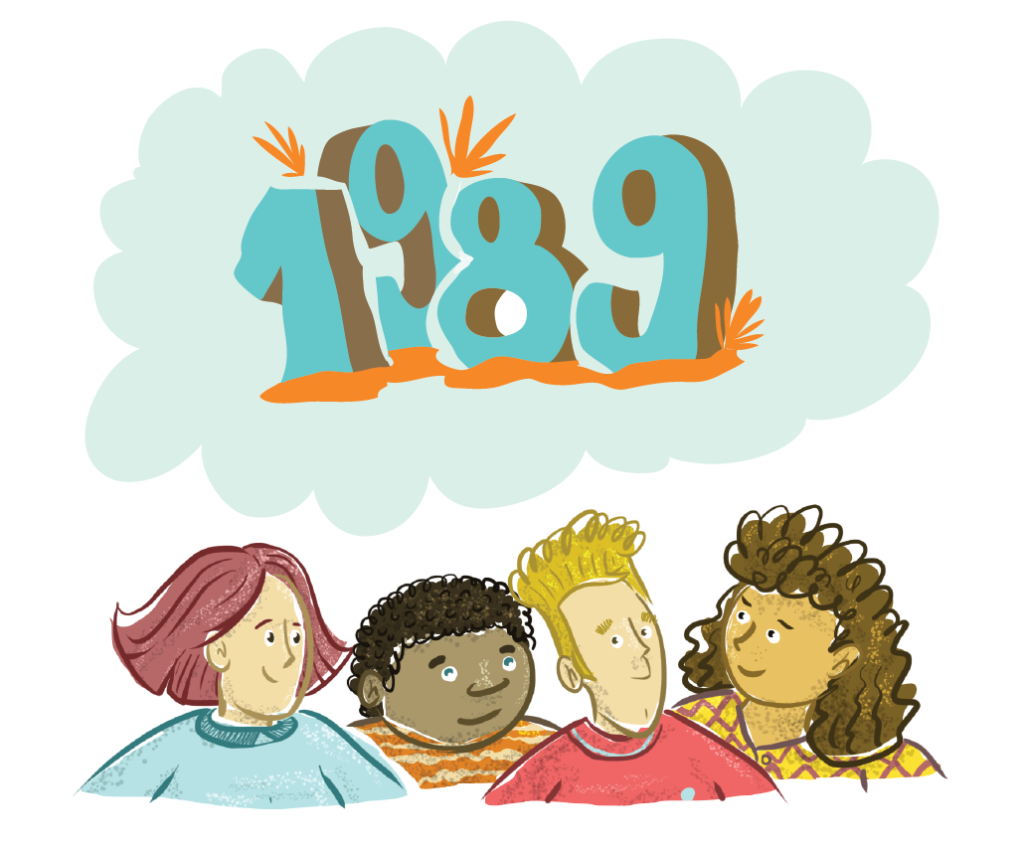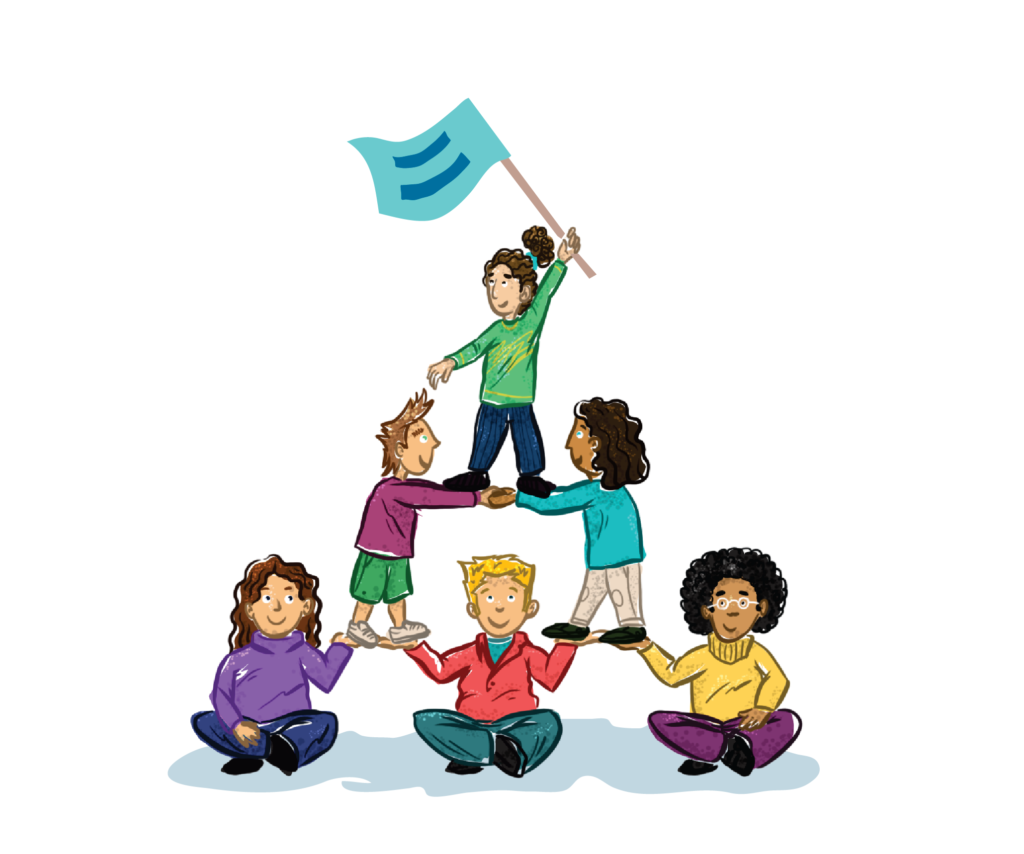Assessment of the involvement of the family, the community, and the students in the development of a Human-Rights-Based School
Living Democracy » Principals » HUMAN RIGHTS BASED SCHOOL » Assessment of the involvement of the family, the community, and the students in the development of a Human-Rights-Based SchoolAwareness
Implementing Human Rights principles is a task that necessarily engages governments, as stipulated by the statute of all core human rights conventions, including those about education. At the same time, more and more democratic societies recognize governments’ limited ability to implement the standards and principles of Human Rights unless all people are actively involved and adhere to them. For human rights become a reality, they must be upheld and respected by everyone, including families, schools and other institutions that provide services for students, as well as the communities, and all levels of administration.
Especially here, you would need to understand how closely the United Nations Universal Declaration of Human Rights and the Convention on the Rights of the Child (CRC) are connected (see a short history below). The CRC also highlights the primary importance of parents and families in protecting the rights of the children. However, there is a misperception that the CRC takes responsibilities for children away from the parents and other legal guardians to shift more authority in this area to governments.
This is not the case, however. In several articles, the Convention explicitly references the importance of parents and families, thereby charging the governments with protecting and assisting the families in fulfilling their essential role as nurturers of their children. It calls on governments to respect the responsibilities of parents, legal guardians, and other caregivers for providing appropriate guidance.

|
1945 |
Following WWII, many nations in the world agreed to form a union – thus founding the UN, that is, the United Nations. Together they wanted to support peace and liberty in the world. |
|
10. December 1948 |
On this day, the United Nations adopted the Universal Declaration of Human Rights. These basic rights of all human beings in the world were understood to apply to children as well In recognition of the plight of many children, the understanding was redefined to grant children special status and protection. |
|
1950 |
A proposed first draft of children’s rights declaration was subsequently discussed by the UN member states for several years. |
|
20. November 1959 |
On this day, the United Nations General Assembly adopted the Declaration of the Rights of the Child which defines children’s rights as the right to protection, education, health care, shelter, and good nutrition. Although such a declaration was non-binding for all member states, it marked the first major international agreement and consensus on the fundamental principles of children’s rights. |
|
1979 |
In the whole world, this year was celebrated as the Year of the Child. The rights of children were thought about and discussed everywhere. For the benefit of children, more and more people wished these rights to be worked out in more detail, and, more importantly, to be made more legally binding. |
|
20. November 1989 |
On this day, the General Assembly of the United Nations unanimously adopted the Convention of the Rights of the Child. Since then, the governments of almost all nations in the world have signed the Convention on the Rights of the Child. |
The Convention also strongly advocates for students’ participation and upholding their rights to participation, namely: the right to access information, the right to expression, the right to involvement in decision-making, and the right to association. To promote the right to participation in the school context, it is necessary to provide an enabling environment within the educational institution, the family, the community, and society at large. In this context, such issues as inclusion, language, non-corporal punishment, a safe environment, and gender equality play a crucial role.
Thus, assessing the comprehensiveness of a school’s approach to involving student, family, and community participation requires looking at three Key Performance Areas, namely:
- Mechanisms for students to express their views about schoolwork, school life, and participating in the school organization,
- Mechanisms for building school-family partnerships for the management and running of the school, the development and protection of students, and
- Mechanisms for building school-community partnerships for school management and support, student protection, and community improvement.
Preparation
What steps to take?
- Form a team to work with during the whole process. Start by jointly discussing the approach and review the list of indicators.
a. Select the ones you consider important for your school.
b. Add indicators you feel are missing.
c. Fill in the form with about ten indicators you find important. Be sure to choose some where you do well and include others where you need additional development. - Prepare a team action plan and a time frame for a first assessment, which will be the starting point for the further development. Include into the assessment:
a. Pupils
b. Teachers
c. Other school staff
d. Parents
e. School board
f. Members of the community you may be cooperating with
g. … - Develop the action plan and the time frame. Make sure, they include
a. The school’s profile after the first assessment.
b. Steps you will undertake (in the next 6 months).
c. A second assessment to learn about the developments.

18 possible indicators to assess the level of involvement of different actors within your school:
- The school promotes interaction between students in a manner consistent with democratic methods (i.e., mutual respect, cooperation, critical thinking and understanding to solve problems).
- The school provides and welcomes opportunities for students to express their views regarding activities and life in school.
- The school has mechanisms – such as a school newsletter or publication, a student bulletin board, an opinion box, or polling tools – to give students the opportunity to express their opinions and concerns about important school and community issues.
- The school involves students in meetings and planning sessions that concern their well-being.
- The school has an actively working student council.
- All students are given an equal opportunity to participate in the management and leadership of school clubs, teams, and associations.
- The school has a Parent-Teacher Association that meets regularly and has a written plan of action.
- The school provides understandable, accessible, and well-publicized processes for influencing decisions, raising issues or concerns, appealing decisions, and resolving problems.
- The school disseminates information about school reforms, policies, disciplinary procedures, assessment tools, and school goals.
- The school regularly sends news of school activities to parents and members of the School Committee.
- Parents feel welcome to ask questions or discuss issues concerning their child/children at the school.
- Parents are encouraged and assisted by the school to help their students consolidate their learning at home when that is deemed necessary.
- Schools communicate with parents about positive student behavior and achievement, not just concerning incidents of misbehavior or failure.
- Parents inform the school about any major changes in their child’s home life so that appropriate help can be provided, if needed.
- The school has links with community leaders and other stakeholders, is responsive to the needs of the community, and provides opportunities for exchanging ideas with community members in an effort to increase all students’ access to and well-being in school regardless of their background or ability.
- The community helps the school to reach out to all students who have been excluded from school.
- Community women and men with specialized knowledge or skills are invited and welcomed into the classes as resource persons.
- The school develops partnerships with local businesses, civic society groups and NGOs to advance student learning and assist families.
Action
Choose in your team 10 indicators from the list.
| Chosen indicators for involvement | Status of this indicator in my school from 1 to 10. | Steps to be taken (collected by the discussion teams). |
| 1. | ||
| 2. | ||
| 3. | ||
| 4. | ||
| 5. | ||
| 6. | ||
| 7. | ||
| 8. | ||
| 9. | ||
| 10. |
- Based on the list above, prepare a handout or flipcharts to be given to all stakeholders included in the assessment process.
- Form roundtables with the different stakeholders (pupils, teachers, staff members, parents, board members, etc). The latter may meet on the occasion of a big school event, or scheduled meetings according to their availability.
- Have them discuss their assessment and their comments.
- Task them to come up with proposals for improvement.
- Collect all comments and proposals in your team.
- Devise a clear and actionable master plan for the coming 6 to 12 months.
- Report the masterplan to all key players involved.
- Plan the next assessment period (Transparency comes first!).


